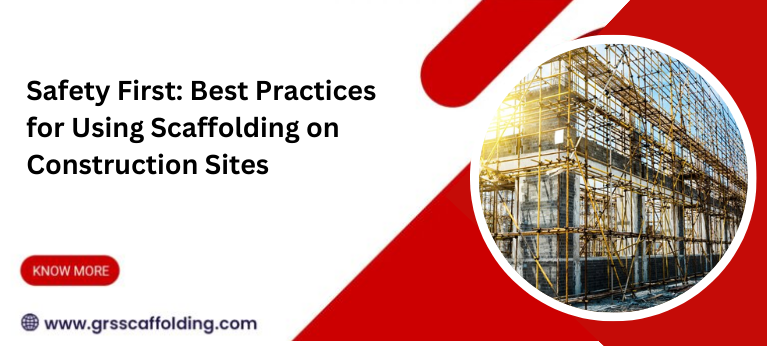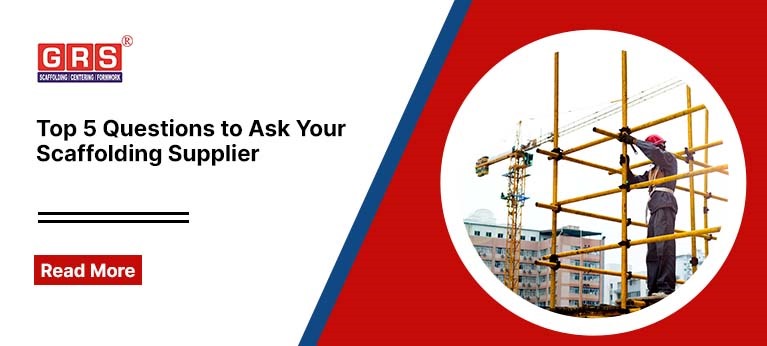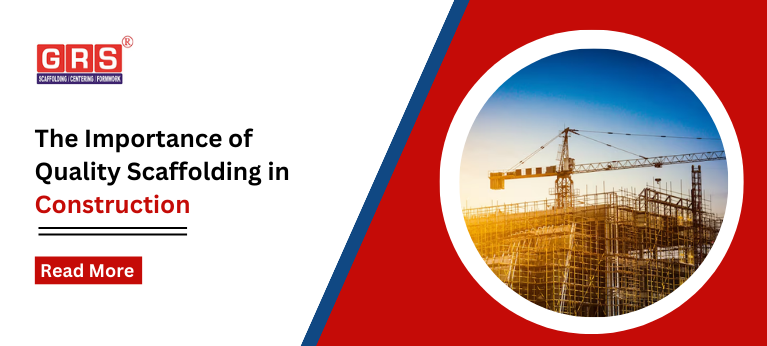In the bustling world of construction, safety reigns supreme. Among the myriad safety measures employed, scaffolding stands out as a vital component for ensuring the well-being of workers.
This article delves into the best practices for using scaffolding on construction sites, covering everything from risk assessment to compliance guidelines.

Understanding Scaffolding:
Before delving into safety protocols, it’s crucial to grasp the fundamentals of scaffolding. Scaffolding serves as a temporary structure, providing support for workers and materials during construction, maintenance, or repair tasks.
Different types of scaffolding, such as supported scaffolds, suspended scaffolds, and mobile scaffolds, cater to various project requirements.
Risk Assessment and Planning:
The journey towards a safe construction site begins with a comprehensive risk assessment. Identifying potential hazards and planning accordingly is paramount to mitigating risks associated with scaffolding.
Prioritize factors like ground conditions, load capacities, and environmental considerations during the planning phase.
Scaffolding Installation Best Practices:
Safety starts from the ground up, quite literally, when it comes to scaffolding installation. Ensuring a stable foundation lays the groundwork for a secure structure.
Adhering to manufacturer guidelines and employing proper bracing techniques are essential steps in erecting scaffolding safely. Regular inspections before and during use further guarantee structural integrity.
Safety Measures for Scaffold Users:
Equipping workers with the knowledge and tools to navigate scaffolding safely is non-negotiable. Thorough training programs familiarize workers with proper scaffold usage, hazard recognition, and emergency procedures.
Implementing fall protection systems, such as guardrails, personal fall arrest systems, and safety nets, adds an extra layer of security.
Environmental Considerations:
Mother Nature can be unpredictable, posing additional challenges to scaffolding safety. Weather-related precautions, like wind speeds and precipitation forecasts, should inform decision-making processes.
Adapting scaffolding designs to accommodate site-specific conditions ensures stability and resilience in varying environments.
Compliance with Regulations and Standards:
Navigating the labyrinth of safety regulations and standards is essential for any construction endeavor. Familiarize yourself with pertinent regulations, such as OSHA standards in the United States, and adhere to industry best practices.
Compliance isn’t just a legal obligation—it’s a moral imperative to safeguard the well-being of workers.

Conclusion:
Ensuring safety on construction sites is our top priority at GRS Scaffolding As a leading scaffolding manufacturer in Kolkata, we understand the importance of robust safety practices in every project.
Our commitment to excellence extends beyond manufacturing quality scaffolding to providing comprehensive support for our clients’ safety needs.
With our expertise in scaffolding design, installation, and compliance, we empower construction teams to work confidently and securely. From conducting thorough risk assessments to delivering user training, we go the extra mile to ensure a safe working environment for all.
If you’re seeking reliable scaffolding solutions backed by unparalleled safety standards, look no further than GRS Scaffolding.
Contact us today to learn more about our services and how we can support your next project. Your safety is our priority, and we’re here to partner with you every step of the way.
Together, let’s build a safer tomorrow. Contact us now.



